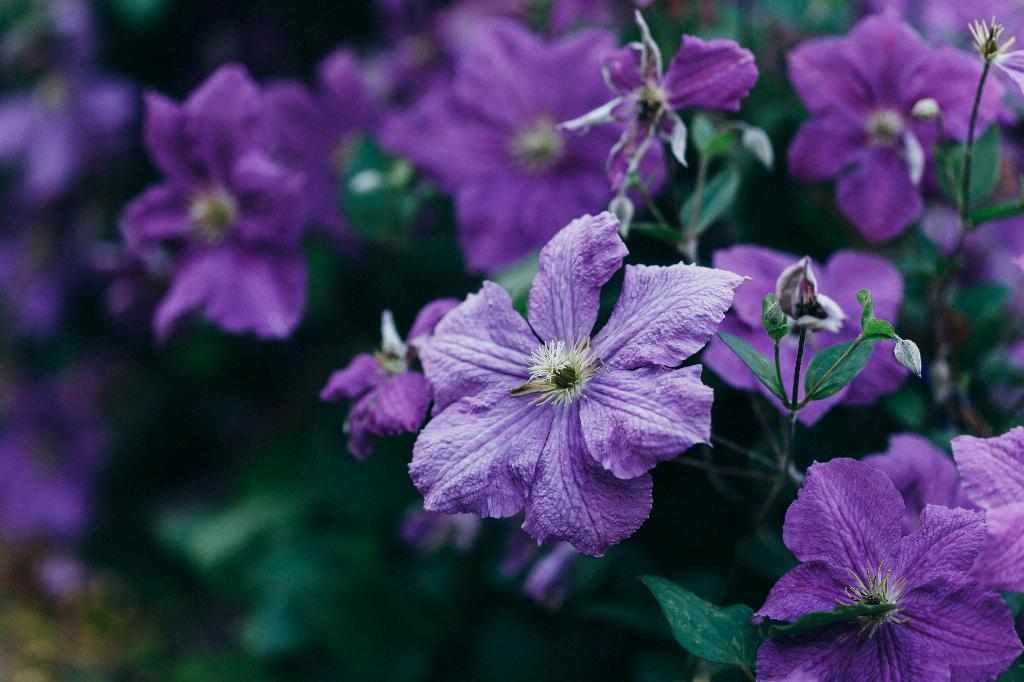When it comes to growing Clematis vines successfully, understanding their key requirements is crucial. Firstly, consider the lighting conditions. Clematis thrive best in full sun, although some varieties, like ‘Nelly Moser’, can still bloom in partial shade. However, for optimal blooming, ensuring they receive adequate sunlight is essential. In regions with hot summers, providing afternoon shade can also benefit Clematis plants.
Another critical factor in growing Clematis vines is the soil quality. These plants prefer soil that is moist yet well-drained. Aim for a neutral to slightly alkaline pH level in the soil for ideal growing conditions. By ensuring the soil quality meets these criteria, you can promote healthy growth and blooming in your Clematis plants.
When planting Clematis vines, it’s important to consider the location. Choose a spot that offers the appropriate lighting conditions and ensure the soil is suitable for their growth. Clematis vines are known for their climbing nature, so providing them with a supporting structure, such as a trellis or fence, is essential. This allows the vines to climb and flourish as they grow.
Regular watering is crucial for the health of Clematis vines. While they prefer moist soil, it’s essential to avoid overwatering, as this can lead to root rot. Finding the right balance in watering frequency is key to maintaining optimal soil moisture levels for your Clematis plants. Additionally, mulching around the base of the plants can help retain moisture and regulate soil temperature.
Pruning is an important aspect of growing Clematis vines, as it helps promote new growth and flowering. Understanding the specific pruning requirements for your Clematis variety is crucial, as different types may have varying pruning needs. Generally, pruning in late winter or early spring before new growth emerges is recommended to maintain the health and shape of the vines.
Feeding your Clematis vines with a balanced fertilizer can help support their growth and blooming. Choose a fertilizer specifically formulated for flowering plants and apply it according to the package instructions. Feeding your Clematis plants during the growing season can provide them with the essential nutrients they need to thrive.
Protecting Clematis vines from pests and diseases is key to ensuring their health and longevity. Keep an eye out for common pests like aphids and spider mites, and take appropriate measures to manage infestations. Regularly inspecting your Clematis plants for any signs of disease or pest damage can help you address issues promptly.
Supporting the growth of Clematis vines as they climb and spread is essential for their overall health and appearance. Training the vines to climb a supporting structure can help them grow in a controlled manner and prevent tangling. As the vines grow, gently guide them along the support to encourage upward growth.
Consider the blooming season of your Clematis variety when planning your garden design. Different Clematis varieties bloom at different times of the year, so strategically planting them alongside other flowering plants can create a visually appealing garden display throughout the seasons. Coordinate the blooming periods of your Clematis vines with other plants for a well-planned garden layout.
Regularly monitoring the growth and health of your Clematis vines is important for identifying any issues early on. Keep an eye out for signs of stress, such as wilting leaves or stunted growth, and take appropriate action to address any problems. By staying vigilant and proactive, you can help ensure the continued health and vitality of your Clematis plants.
As Clematis vines are known for their stunning blooms, proper care and maintenance are essential to encourage prolific flowering. By providing the right growing conditions, such as adequate sunlight, well-drained soil, and appropriate support structures, you can help your Clematis vines thrive and produce beautiful blooms season after season. With the right care and attention, your Clematis plants can become a focal point in your garden and a source of joy for years to come.

